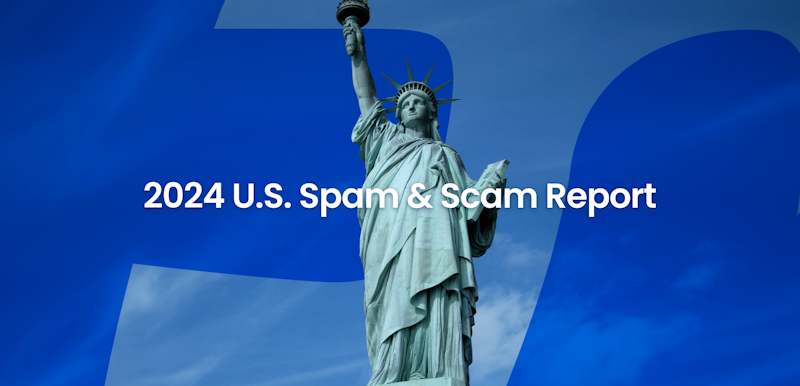
Truecaller Insights 2018 Latin America Spam Report Reveals: Brazil, Chile and Mexico Receive the most Spam Calls in the Region
Kim Fai Kok
Oct 17, 20184 min read
There must hardly be someone who has not received a spam call this year. In the morning, during lunch time, in the evening or on the weekend. We have all received a call from an unknown number, offering some kind of service that we have not requested and – worse yet – that we do not even need. Moreover, curiosity and fear of missing something important, also often leads us to answer annoying calls.
Last year we released a study on spam calls globally: “Truecaller Insights Special Report: The Top 20 Countries Affected by Spam Calls” – and the data was astonishing. This year we wanted to dig in to regional statistics in Latin America, as spam calls have been surging in the region.
- Brazil is the country that suffers most from spam calls in the region with 37.5 calls per user per month, 81% higher than last year.
- Chile leads the ranking among Spanish-speaking countries in Latin America with 21.9 average calls per user per month. This is a 25% increase from last year.
- Mexico is the third most spammed country in region with 20.9 spam calls, which is a 71% increase compared to last year.
- Comparing the data from 2017, the largest increases in the average number of calls are Guyana (+380%), Costa Rica (+330%) and the Dominican Republic (+97%.)
- There has also been a significant increase of spam calls in Colombia (+79%) and Peru (+62%.)
- The only country that has seen a decrease of spam calls is Puerto Rico, which went from 7.9 calls per user per month to 5.9 (-25%.)
Digging deeper into the top five most affected countries in Latin America, we found that operators, financial services, debt collectors and telemarketers are the one that call people the most. Scam calls are also very common among the countries.
The operators are the biggest spammers (33%) in Brazil, usually these calls are seeking to provide special offers for free data, or unlimited calls. The second biggest spammers in Brazil are debt collectors who make up (24%) of the top spammers in the country – sometimes these calls can be fraudsters pretending to collect money for illegitimate reasons.
Another major spam call problem that the Brazilian should deal with are nuisance calls (21%.) These are more general types of calls that are unwanted and unsolicited that are a disturbance for users, or at the very least, amount to prank calls and at worst, harassment and fake kidnap calls.
A big problem around nuisance calls in Brazil are calls from various companies making telemarketing and promotional calls, which amount to (12%) of the total for reported spam calls.
We can see that Chile has similar spam patterns as Brazil, which are dominated by operators (29%), followed by debt collection calls (25%) and financial services (23%). Then e-commerce calls (10%), nuisance (8%), telemarketing (2%), scams (2%) and insurance (1%.)
The biggest spammers in Mexico are financial services (32%). Similar to Brazil, Mexico are also affected by a lot nuisance (27%) and scams (19%) calls, which is not surprising.
We can also see that a big chunk of the spam calls (nearly a fifth) are political (12%) and telemarketing calls (7%) in Mexico.
Peru seems to have more of an even spread when it comes to who is spamming. With telemarketing (26%) leading the way, general nuisance calls (20%) and financial services are the most common types of spam calls.
Interestingly, Peru is the only country that seems to get Health (10%) related calls in the region.
Costa Rica’s spam call issue is mostly with financial services (45%) trying to sell new loans, which is ironic, knowing that their 2 largest spam call issue is with debt collectors (40%.)
The data in this article was aggregated anonymously from incoming calls that either has been marked as spam by users – or automatically been flagged by Truecaller during the period of June 1-30, 2018 to understand the monthly average spam rate. During this period of time, our users received over 15 million spam calls.
As for what type of spam calls users are receiving the most we looked at the top 100 spammers in each region for the month of June.
Nuisance: Due to this being a broad spectrum of calls, it is generally calls that is unwanted, disturbance for users, harassment, pranks.
Telemarketing: Promotional calls from companies, surveys, political/robo calls, new client outreach for services, subscriptions, etc.
Operator: Telecom companies upselling data plans, promotions, etc.
Financial service: Banks, credit unions, credit card companies etc.
Scam: Fraud attempts, money swindling, unknown links, etc.
Insurance: Companies that specialize in selling different types of insurances.
Debt collection: Organizations that specialize in payments of debts owed by individuals or businesses, bounty hunters.
Political: Campaign calls to secure votes for parties, robocalls.
Health: Hospitals, private practices.
You can find the Spanish version of the report here.
You can find the Portuguese version of the report here.

Kim Fai Kok
Oct 17, 20184 min read


